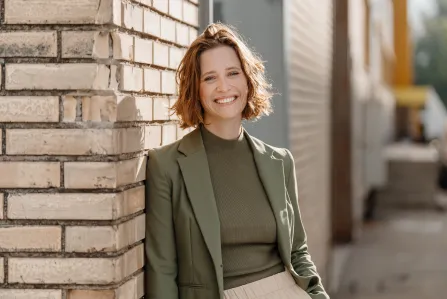Making Waves with Research
Eawag: The Swiss Federal Institute of Aquatic Science and Technology

The Swiss Federal Institute of Aquatic Science and Technology, Eawag, opened its doors to the public in order to make complex research accessible to everyone. standing ovation designed an experience that brought scientific knowledge to life, striking a balance between depth and simplicity.
The Challenge: Communicating Complex Topics in Simple Terms
On September 14, 2024, Eawag, one of the world's leading aquatic research institutes, opened its doors in Dübendorf, Switzerland. The goal? To provide a broad audience, from families to interested citizens, with insights into complex scientific topics. Researchers offered engaging glimpses into their daily work, from issues of drinking water availability and river restoration to biodiversity and urban climate adaptation efforts.
The challenge was clear: How do you make research that is usually discussed in scientific circles accessible to an audience with little or no background knowledge? Eawag had to think carefully and adapt to meet the needs of these diverse groups.

Solution #1: Engaging Facts, Not Just Science Talk
Instead of presenting complex research posters, we transformed the open house into an interactive experience lined with creatively designed display fences. Concise, relatable fun facts made even complex topics accessible. Did you know that Switzerland uses as much water annually as a quarter of Lake Zurich? Or that there's gold in wastewater? These simple, understandable messages generated countless «aha» moments.
- Switzerland uses about 930 million m³ of water per year, equivalent to 1/4 of Lake Zurich.
- Phytoplankton can create huge blooms visible from space, turning the water green, red or brown depending on the species and pigments present.
- Each year, about 43 kg of gold, worth about 1.8 million Swiss francs, flows into Swiss wastewater treatment plants, although the concentrations are too low to recover it.
- In standard wastewater, urine represents only 1% of the volume but contains 60–80% of the nutrients.
«standing ovation showed us that less – and even less – is more. This clear, simplified approach was the key to success, as the enthusiastic response from visitors confirmed.»
Solution #2: Guided Discovery, Not Information Overload
A «trail of stations» creatively linked Eawag's diverse research topics. Visitors could explore the site on their own with a map in hand, completing interactive tasks to collect stamps. This engaging, goal-oriented approach guided them through different areas of water research without losing their interest.

Solution #3: A Hands-On Approach to Learning
Interactive stations turned visitors into active scientists and provided a hands-on experience. A highlight was the «Water of the World» installation, which vividly illustrated the global distribution of water: over 100 bottles represented the Earth's ice, while a tiny, almost invisible bottle showed the small proportion of drinkable water. Visitors gained a deeper understanding of water issues without feeling overwhelmed. From fishing for colorful microbes in a blue ball pit to exploring microscopic life, the stations offered engaging insights into the world of water science for all ages.
Conclusion: Simplified Complexity, Maximum Impact
Eawag's Open House was a great success. With a careful balance between scientific depth and accessible presentation, it sparked and sustained visitor interest. High participation in the guided tours and lively interaction at the stations confirmed the concept's effectiveness.







